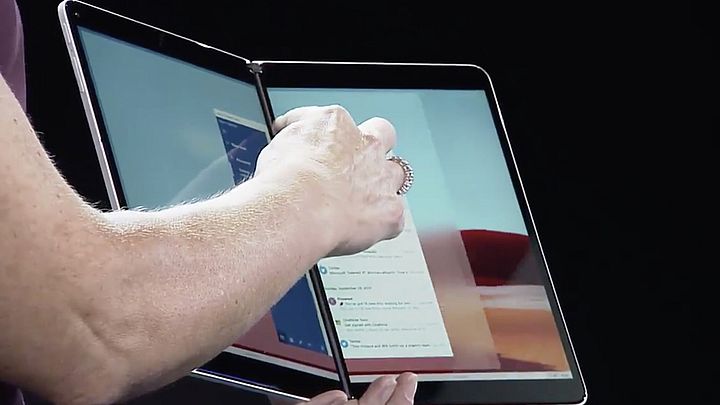Microsoft Announces Windows 10X
On the occasion of the presentation of Surface Neo tablet, Microsoft announced a new version of its flagship operating system. Windows 10X, as the OS is called, is dedicated to devices equipped with two screens.

Microsoft is constantly working on innovative solutions to make people's lives better. Yesterday the company presented a new mobile device in its offer - Surface Neo tablet. The very design of this model arouses a lot of interest, because it is equipped with two screens with a diagonal of 9 inches. What is most interesting, however, Surface Neo will also receive a special operating system. Windows 10X, as it is called, is designed for devices with two displays. It is worth mentioning that this is not the Windows 10S system (which at the beginning... wasn't very good). Win 10X is a redefined OS, smarter and more efficient.
Naturally, Microsoft's newest "child", the two-screen Surface, will be the flagship model for Windows 10X. This does not mean, however, that we will not see the new system on competitive hardware. Engadget informs that the software will also be available on Dell, HP, Lenovo and Asus devices. Each of the manufacturers plans to launch two-screen devices on the market in 2020.
But back to the operating system itself, Windows 10X is supposed to be a more modular version of the standard 10. Each small bit is to help us run two screens. Of course, the applications we're going to use must come from a trusted source. This may cause some problems for people who like to tinker with their software.
The start menu will also be changed. Windows 10X will be devoid of active tiles in favor of ordinary icons and documents. The new menu will be more finger-friendly, and what's more, it will enable us to stretch on two screens (which is not normal on this type of devices). Naturally, all these new features will not suddenly get us rid of all scepticism about two-screen devices. We're used to touch keyboards on our phones, but traditional solutions still work best at work. All that remains is to wait for the premiere and first tests of both the system and the device, because so far we still know very little about them.
- Microsoft Teams will now monitor who is actually working in the office. And the boss will be able to check it at any time
- „Let him sit in the middle of this stupid office.” Microsoft CEO wants everyone to work in open space, not remotely
- George R.R. Martin asked ChatGPT to write a sequel to Game of Thrones, then took the result to court
0
Latest News
- Larian Studios CEO explains generative AI use in development of Divinity
- Kojima Productions celebrates its big 10th anniversary with an upgraded Ludens
- They didn't conquer TGA, but they were still very successful. Now they are thanking the fans in the best possible way
- Pawel Sasko revealed his favorite Cyberpunk 2077 ending and explained what CD Projekt Red wanted to say to players through the saddest one
- Ubisoft acquired Amazon's studio and is now in charge of a promising game that „has a real opportunity to bring something fresh and dynamic”

